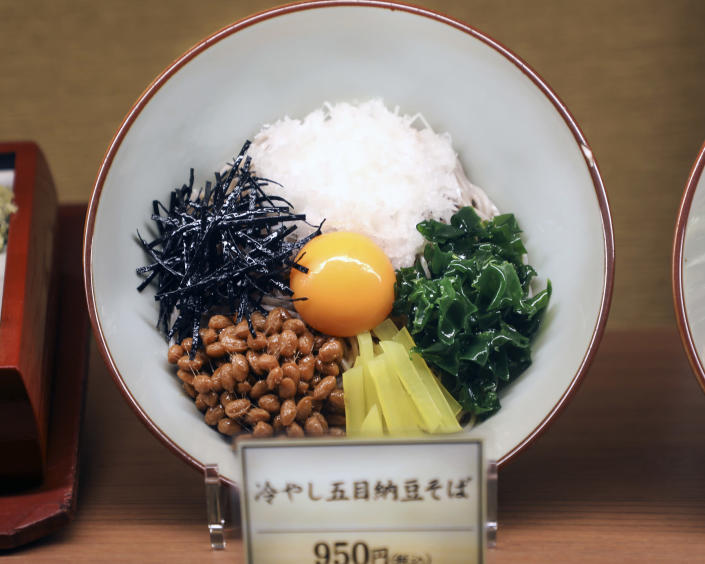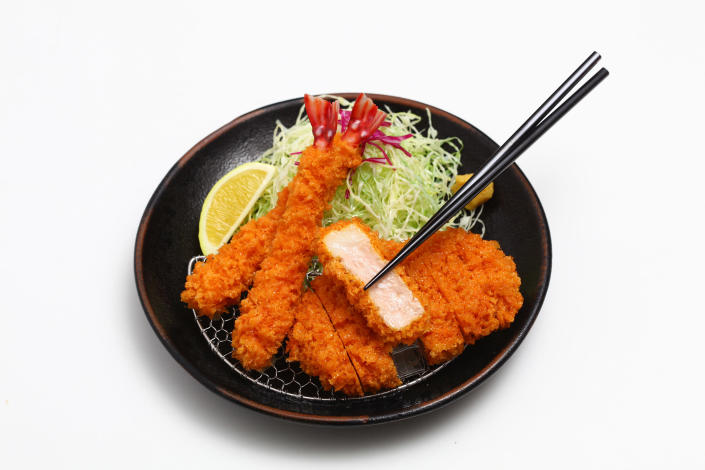[ad_1]
Look, but really don’t eat.
That’s the best way to consume the bountiful shows the likes of nigiri, curry and tempura exhibited in the home windows and at tables of so quite a few everyday dining Japanese places to eat. Identified in Japan as “shokuhin sampuru” (食品サンプル), food items designs are frequently manufactured of plastic or wax and emulate the search, texture and sort of meals. They ended up initial applied by eating places in the days prior to colour pictures as a way to exhibit customers what products ended up out there on hand.

Today, their operate has advanced into extra of an art kind. In the streets of Japan and individuals belonging to diasporic communities outside of the place, you’ll come across sampuru beckoning opportunity diners inside of eateries and stores. The phony and glistening delights also provide as travel keepsakes as properly as ephemera of time long gone by.
Like the greatest of meals-connected inventions, numerous have laid claim to remaining the original masterminds of foodstuff designs.
In an interview with Now Food, Samuel H. Yamashita, a professor of History at Pomona University with expertise in Japanese and Pacific Rim cuisines, explained the culinary heritage of sampuru has 3 various origin theories.

“One principle is that they originated in Kyoto in 1917, and they ended up invented by a guy named Soujiro Nishio,” Yamashita explained, including that the craftsman had been an worker of the Shimazu Corporation, a producer that designed plant designs.

Nishio is claimed to have created the very first meals versions in November 1917 and eventually formed Nishio Creation Corporation, which designed the initially meals products. According to legend, it was not till a office retailer in Okayama solicited Nishio for foods replicas that the types truly took off.
A different theory credits Shirokiya Department Retailer, the initially Japanese office keep to have a cafeteria showcasing the waxy delights. The historic office retail outlet dates as significantly back again as 1662, but it was not right up until more than 200 yrs later that displaying the objects on their menus would turn into portion of the store’s advertising and marketing method.

“They had the plan to show a serving of each individual dish,” an short article on sampuru released by Tofugu, a Japanese lifestyle and language web site explains. “But serious food items could draw in bugs and get unfortunate-searching in other ways by the conclusion of the day, and producing the foods and throwing it absent each and every working day was not without the need of expense.” With this dilemma, the division store tapped Tsutomu Sudo, an anatomical maker of human entire body parts and animals.

A 3rd concept cites Takizo Iwasaki, a man who ran a bento shop in Osaka, as turning out to be the first sampuru maker. According to Yamashita, Iwasaki made bento lunches and, just after a bit of trial and error, created a product of an omelet that was so realistic when he confirmed it to his wife, she wasn’t equipped to tell the fluffy egg dish from the authentic point.
Recognised right now as the “father of the phony foodstuff product sector,” Iwasaki’s organization — formerly the Iwasaki Group, now identified as Iwasaki Be-I — is claimed to account for 60% of modern Japanese sampuru sector.

These initially designs had been built of wax, but today’s designs are built of plastic.
While the valuation of sampuru is superior, most of its makers still mainly customized-make the models by hand. The handcrafted system of the food products is just one of moment detail and artisanship.
A restaurant soliciting replicas of its menu things will usually freeze their dishes so that a manufacturer can start out the process of generating a casting mildew.
For its technique to constructing duplicate foodstuff, Iwasaki Be-I states on its web site that it follows a “not commonly known” move-by-stage course of action. Starting with the generation of a mildew made by duplicating the tough surfaces of food items, the manufacturer then little by little fills the mold with silicone and a colored resin. Following heartening the material in an oven, the silicone is eradicated from the product and then painted with airbrushes and paintbrushes.
It does not end there, while. Just after all, the essential to any dish is presentation. Whether or not it is how your facet of fries will be placed along with a burger stacked high with toppings, or the lacquered look of unagi in excess of a bowl of rice, food styles are established in a way to replicate how a dish will be served.

Beyond whetting appetites, food stuff types have also fostered cultural trade and enlargement all over the entire world.
In an job interview with Today, Seigo Kozakai, the CEO of Iwasaki Mokei (not to be bewildered with Iwasaki Be-I) underlined the effects sampuru has experienced in aiding culinary expansion and collaboration about the globe. “Sampurus grew proportionally to the growth and progress of Japanese places to eat,” Kozakai remarked. “After the 1940s, when Western foods lifestyle arrived to Japan, these sampurus gave visible reassurance to the Japanese people who had not observed many of these dishes right before. Given that then, it was identified that sampurus have been successful and turned what is acknowledged these days.”

Over and above broadening American palates, sampuru has performed a important component in imparting an comprehension of foodstuff as an artwork type in alone. A 1985 post printed in the New York Periods explained sampuru as an case in point of a “pure Tokyo fashion of classic craftsmanship” that had fascinated the artwork planet so a great deal that it was bundled in an exhibition at London’s Victoria and Albert Museum. One particular anecdote from the piece recalled how a customer at the museum had found out a piece of fur on a plastic kiwi fruit the visitor experienced taken as “quite authentic.” Several years later on, by 1990, illustrations of the Japanese food stuff samples were component of a long-lasting assortment at the Museum of Present day Artwork in New York City. And the fascination with meals replicas as art proceeds. In mid-May, the Japan Dwelling Los Angeles hosted Seigo Kozakai for a presentation on the craftsmanship and enterprise of these food items replicas.

With its capability to visually converse the texture and taste profile of foodstuff, sampuru has prolonged served as an ambassador of new culinary encounters for customers globally. These days, they give nonverbal kids and people the potential to connect their dreams, present visitors an option to enterprise outdoors of their cultural comforts, and — with their a lot of shows in window stores — brighten the streets of our environment.
[ad_2]
Supply url